Above is my first attempt at this scene, the one where the crab first sees the cap. It seemed to work well on its own but when I placed it in the sequence with scene 1 before it and the checkers scene afterwards the cap seemed to be rolling in a variety of directions.
Although I am worried that this could disorient the viewer (example above), it could also be interpreted as the cap having an adventure rolling all through the dunes and that time has gone by in between these scenes.
Regardless, I tried again (above) and switched the direction of the cap so that it would have more continuity with the scenes before and after it.
Although the change in direction in the 2nd attempt seems to work better within the sequence, I prefer the pouring actions and emotive reactions of the crab in the first attempt better.
The Medium is the Message
The purpose of the film is to share with people a positive outcome of cross-cultural exposure, especially between developing and developed nations. An example of this outcome is a new approach incorporating the act of ‘reuse’ into our daily lives. It is interesting to note that the crab’s picnic items are mostly repurposed plastic objects that I have been collecting along with many other household items. As a sub-theme of my film, the concept of ‘reuse’ is emphasized by different examples of metamorphosis that the bottle cap goes through. Beyond this symbolic repurposing, I have reused materials to create the film itself. The cup that the crab drinks out of is a toothpaste cap and the orange juice bottle is a soya sauce container. I have repurposed as much material as I could while creating the film including water bottles, tin cans, metal jar lids (which will be detailed in an upcoming post) and of course bottle caps.
Planning for the Next Scene
The next scene I need to film according to the new storyboard is the crab running excitedly with the cap over a hill towards a fence which leads to a Crab Castle. I am worried about the walk / run cycle with 8 legs and wondering if I can hide his body behind some hills and give the illusion he is running, perhaps I should try a run cycle before I try to avoid it.

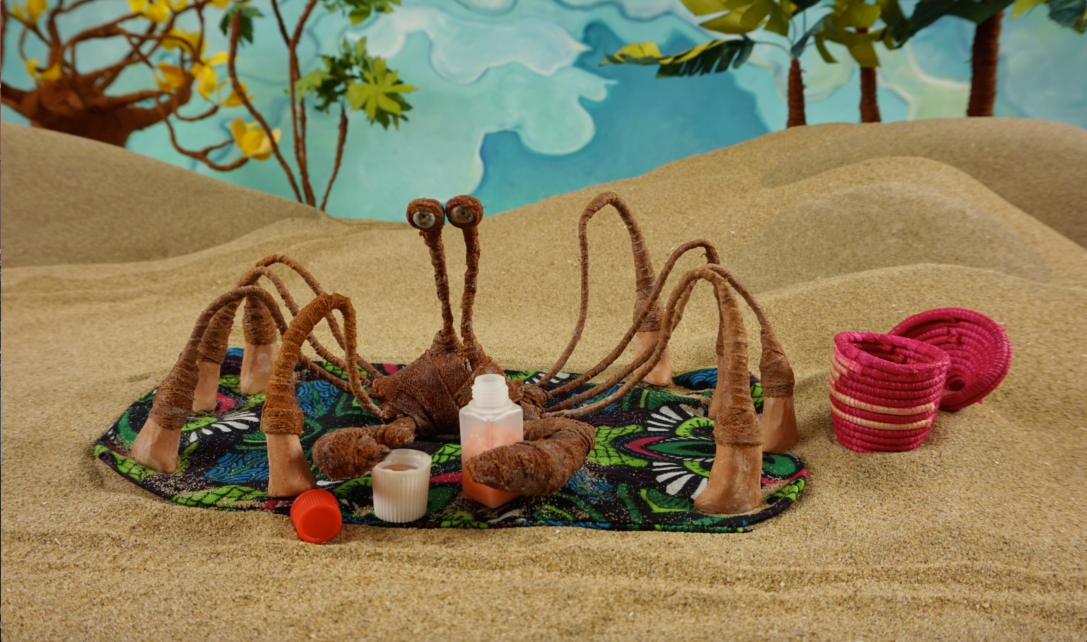



 I made several versions to see which ones would work best and also to have a variety of eyelid positions. The smaller separate lids were difficult to stick on the crab even with sticky tack. Although I went with unbaked Fimo for the lower lids, the bigger closed eyelids that are one piece attached to the eyes securely and stayed in place very well. This was a good improvement from the first attempt at eyelids I made during one of the earlier modules. I used a poor quality plasticine which was somewhat spongy in consistency which made it extremely difficult to sculpt and resulted in a sloppy blink sequence. Fimo baked and even unbaked works much better.
I made several versions to see which ones would work best and also to have a variety of eyelid positions. The smaller separate lids were difficult to stick on the crab even with sticky tack. Although I went with unbaked Fimo for the lower lids, the bigger closed eyelids that are one piece attached to the eyes securely and stayed in place very well. This was a good improvement from the first attempt at eyelids I made during one of the earlier modules. I used a poor quality plasticine which was somewhat spongy in consistency which made it extremely difficult to sculpt and resulted in a sloppy blink sequence. Fimo baked and even unbaked works much better.



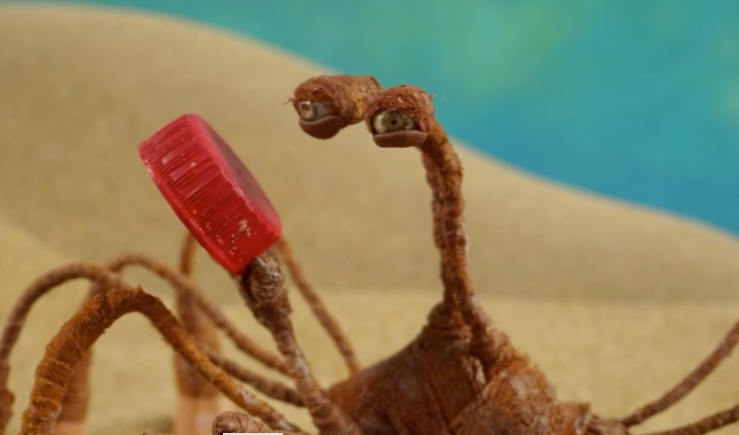 The bottom eyelids are good for showing that the crab is squinting to analyze the bottle cap but maybe not when he is turning towards the viewer because he looks a bit angry. This action could also be smoother by adding more frames.
The bottom eyelids are good for showing that the crab is squinting to analyze the bottle cap but maybe not when he is turning towards the viewer because he looks a bit angry. This action could also be smoother by adding more frames.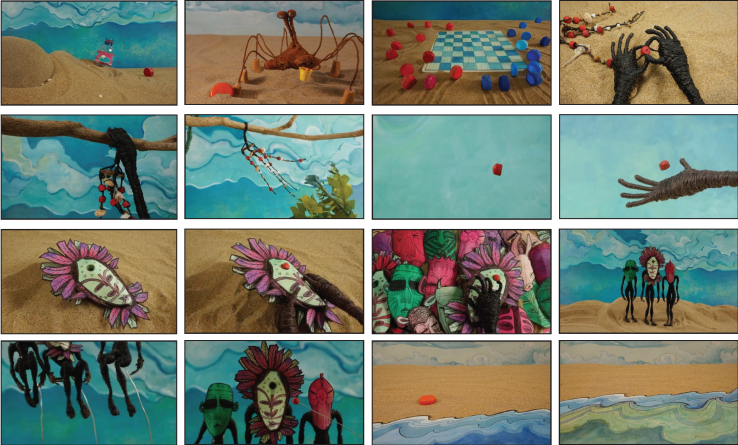
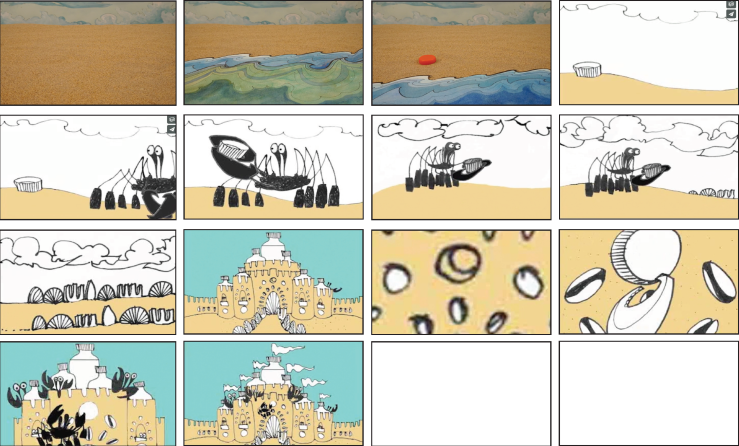 This version of the story board (above) does not include scene 8 (Joy ride). It was taken out for now in
This version of the story board (above) does not include scene 8 (Joy ride). It was taken out for now in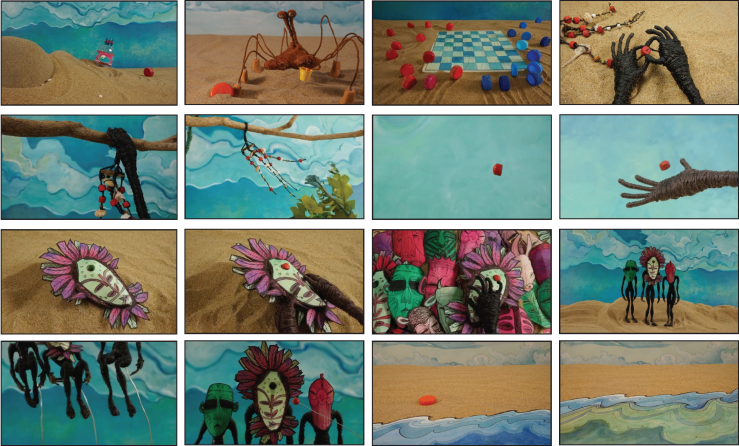
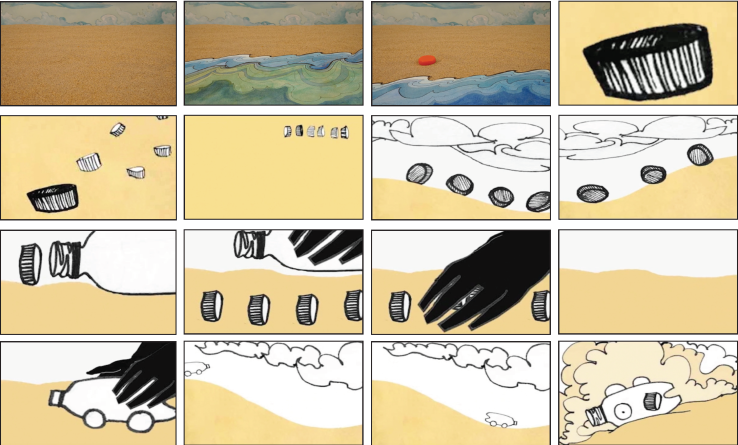
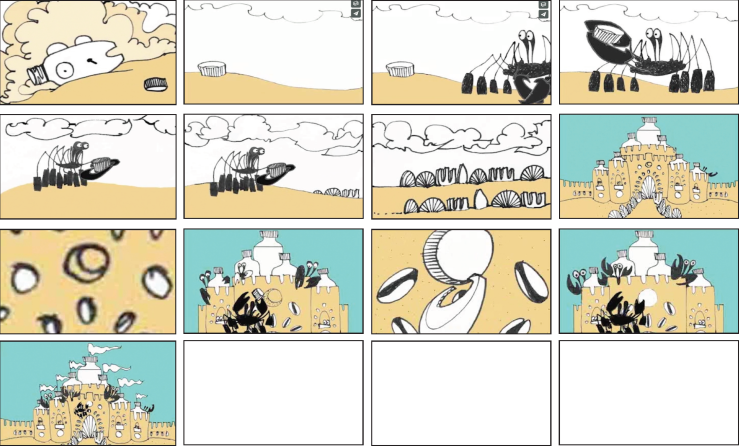 Although i
Although i